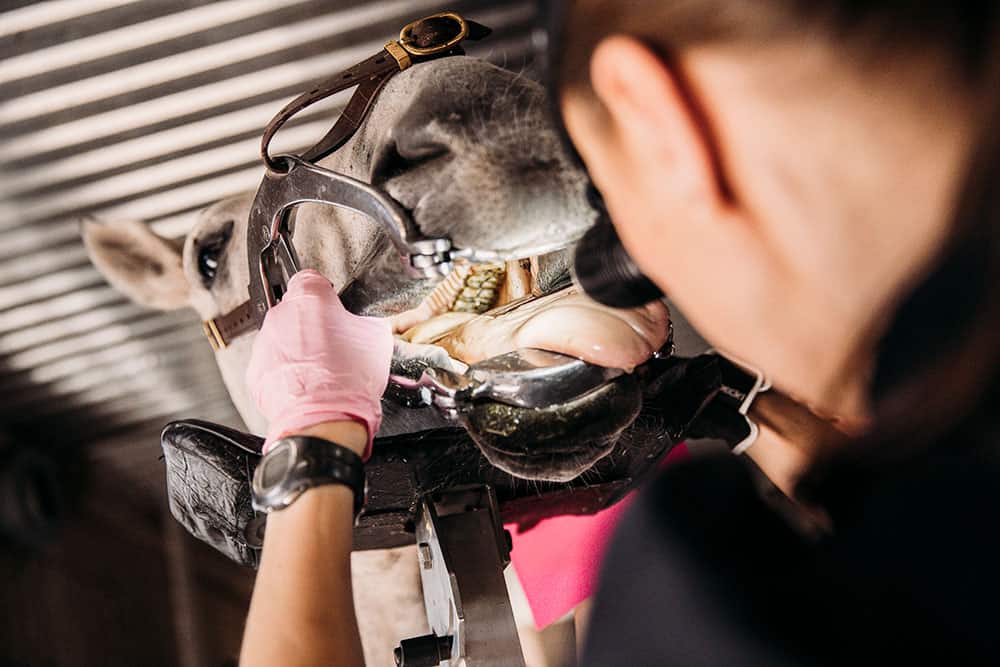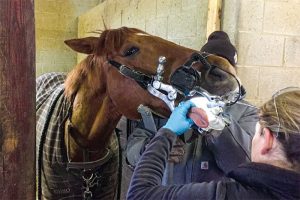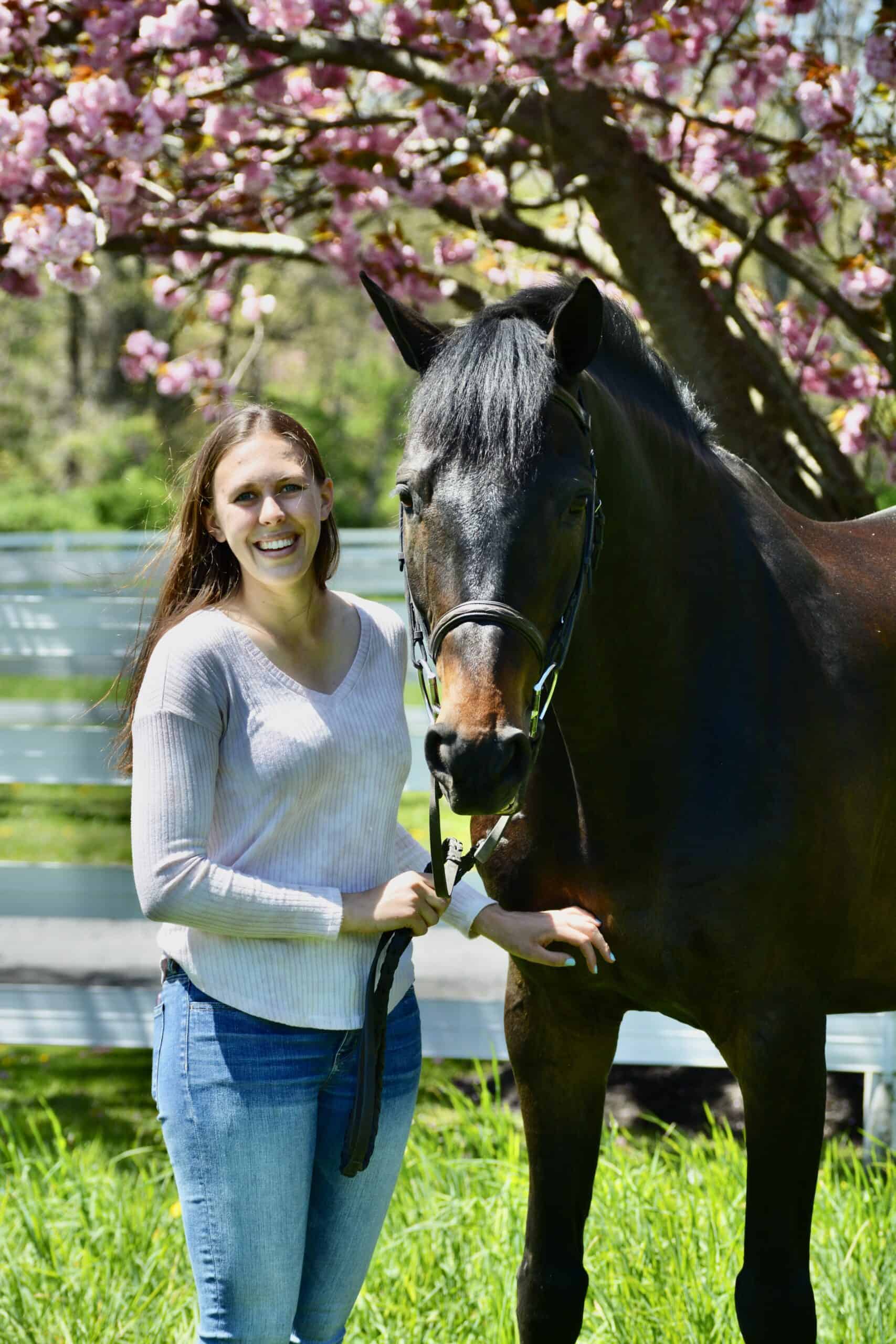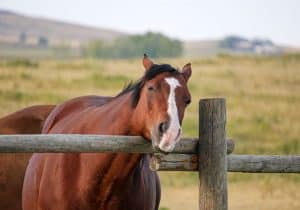Behavioral Signs of Equine Cheek Tooth Findings

Abnormal equine behaviors under saddle and in the stall might be caused by pathologies (disease or damage) originating from the cheek teeth. Recent study results showed that of 183 horses (each belonging to different owners), 95% had one or more abnormal cheek tooth findings upon examination by a veterinarian. The goal of the study was to determine the type, number, and degree of cheek tooth findings that cause behavioral signs associated with dental pain.
“Signs of dental disease are versatile and often overlooked, considered to originate from other causes, or simply regarded as bad behavior,” said study co-author Anna Mykkanen, DVM, PhD, assistant professor of equine and small animal medicine and supervisor for the doctoral program of clinical veterinary medicine at the University of Helsinki, in Finland.
In the study, a veterinarian performed a dental examination on each horse, with the results being withheld from the owner for the duration of the study. Each owner completed a questionnaire survey used to determine which behaviors the horses presented with and their frequency.
The 183 horses included 74 mares, 103 geldings, and six stallions of varying breeds and ranging in age from 5- to 28. One hundred and four examinations were performed using an endoscope, while the remaining 79 were performed with a mirror. All horses were sedated for the examination. The research team placed horses with no potentially painful cheek tooth findings into Finding Group A and those with at least one potentially painful finding into Finding Group B.

The owners who participated in the study provided their horses’ basic information and answered 35 questions about the animals’ eating and bit behavior and any other behavioral patterns.
When interpreting the owner-provided data, the researchers divided the horses into groups by signs. Sign Group 1 included horses with no behavioral signs of cheek tooth pathologies or up to one sign related to bit behavior. Horses with more than five behavioral signs were placed into Sign Group 3 and all others landed in Sign Group 2.
The team found that 76% of study horses had infundibular caries (cavities) and 65% had peripheral caries. They noted fissures in 69% of the horses, diastemas (gaps between teeth) in 38%, secondary dentine defects in 32%, and fractures in 27%. Nine of the horses had no dental findings. Horses in Finding Group A showed fewer signs of dental pain than those in Finding Group B.
The horses that presented with five or more behavioral signs of dental pain were more likely to have broadened or darkened fissures, complicated fractures, or secondary dentine defects. Horses with at least one painful cheek tooth finding expressed a higher number of abnormal eating, drinking, bit, and general behaviors than those with no findings.
“We found that some potent indicators of dental diseases, such as dropping food from the mouth while eating (quidding), are more likely to indicate cheek tooth pathologies,” said Mykkanen. “Horse owners do not need to worry over a single sign, but I would recommend they watch for other signs as well. If the horse shows several suspicious signs, a look into the mouth is a good idea.”
Because signs of dental pain can be confused with other problems, the only reliable way to rule out dental pain is by having a veterinarian perform an oral examination, she added. “Regular oral examinations are key to the early recognition of dental disease and preventing the development of painful conditions.”

Written by:
Haylie Kerstetter
Related Articles
Stay on top of the most recent Horse Health news with















